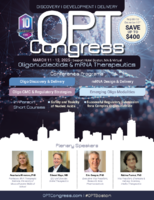Cambridge Healthtech Instituteの第10回年次
Oligonucleotide Discovery & Delivery
オリゴヌクレオチドの発見とデリバリー
Optimizing Design and Advances in the Clinic
デザインの最適化と臨床における進歩
2025年3月11日 - 12日 EDT(米国東部標準時・夏時間)
3月11日(火)
8:00 amRecommended Short Course*
SC1: Safety & Toxicity of Nucleic Acids
*Premium Registration or separate registration required. See Short Courses page for details.
9:45 amRegistration and Morning Coffee
10:45 amWelcome Remarks by Conference Organizer
OPTIMIZING DESIGN, DELIVERY, AND PERFORMANCE
デザイン・デリバリー・性能の最適化
KEYNOTE PRESENTATION: Biological Research with Thiomorpholino Oligonucleotides (TMOs)
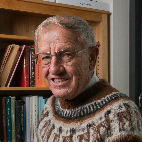 Marvin Caruthers, PhD, Distinguished Professor, University of Colorado
Marvin Caruthers, PhD, Distinguished Professor, University of Colorado
Using genetically targeted mouse studies, TMOs have focused on DMD, NPC, DIPG, STAT3, and type ll diabetes with results superior to other chemistries. In various cell culture experiments using exon skipping or RNase H, significant biological activity targeting genes such as FUS, SLC6A1, ITGA4, PKM, PEG10, Psoriasis, RDEB, and others has been demonstrated. Recently TMOs have shown activity as siRNAs and in CRISPER/CAS experiments.
Living in the World of RNA Therapeutics: Chemistry Has No Limits
Expanding Lipidated siRNAs Chemistry for Heart Delivery
 Annabelle Biscans, PhD, Director, Oligonucleotides and Targeted Delivery, AstraZeneca
Annabelle Biscans, PhD, Director, Oligonucleotides and Targeted Delivery, AstraZeneca
Lipophilic conjugation of fully chemically stabilized small-interfering RNA supports significant and effective delivery throughout the body. Therefore, chemically engineering lipid conjugates may be a strategy to improve siRNA delivery to extrahepatic tissues. In this talk, I will describe recent progress in understanding the relationship between conjugate chemical structure and siRNA pharmacokinetic/pharmacodynamic behavior. We will exemplify that modulating conjugate chemistry supports functional delivery to a range of tissues, including heart.
12:30 pmTransition to Lunch
12:40 pmLuncheon Presentation (Sponsorship Opportunity Available) or Enjoy Lunch on Your Own
1:10 pmSession Break
FEATURED PRESENTATION: Ways to Improve Antisense Oligonucleotide-Mediated Exon Skipping for Duchenne Muscular Dystrophy
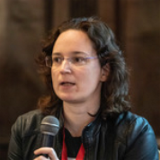 Annemieke Aartsma-Rus, PhD, Professor of Translational Genetics, Leiden University Medical Center
Annemieke Aartsma-Rus, PhD, Professor of Translational Genetics, Leiden University Medical Center
Duchenne muscular dystrophy is caused by lack of dystrophin. Antisense-mediated exon skipping can allow patients to produce partially functional dystrophin. This is a mutation specific approach and 4 exon-skipping oligonucleotides have been approved to skip exons 45, 51, and 53, based on dystrophin restoration at low levels. There is room for improvement, such as increasing the understanding of dystrophin transcript production and processing, delivery of oligonucleotides to skeletal muscles, and optimizing oligonucleotide chemistry. This requires sophisticated model systems to study human specific oligonucleotides. The presentation will cover aspects and considerations to improve exon skipping for Duchenne.
GalAhead muRNA: A Proprietary GalNAc-RNAi Therapeutic Platform for Simultaneous Downregulation of Multiple Genes
 Jim Weterings, PhD, Vice President Research, RNA Therapeutics & Delivery, Sirnaomics
Jim Weterings, PhD, Vice President Research, RNA Therapeutics & Delivery, Sirnaomics
GalAhead muRNA, a proprietary RNAi-based platform allows for simultaneous downregulating of multiple genes in liver hepatocytes, providing treatment of liver associated diseases. The muRNA concept allows modulation of converging biological pathways while still allowing a window to perform physiological function. muRNA can also simultaneously address two or more non-associated indications where patient populations have a considerable overlap. GalAhead muRNA offers an inspiring venue in the RNAi space providing safe and long-lasting effect in treating patients with unmet medical needs.
3:10 pmSponsored Presentation (Opportunity Available)
3:25 pmGrand Opening Refreshment Break in the Exhibit Hall with Poster Viewing
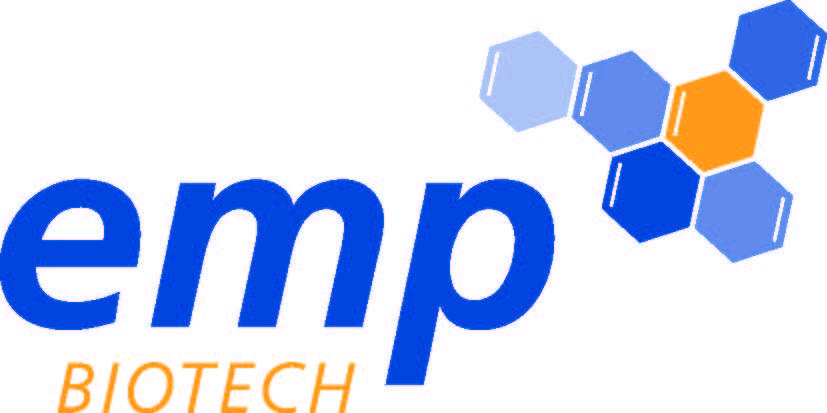
PLENARY SESSION
プレナリーセッション
siRNA Chemical Engineering
 Anastasia Khvorova, PhD, Professor, RNA Therapeutic Institute, University of Massachusetts Medical School
Anastasia Khvorova, PhD, Professor, RNA Therapeutic Institute, University of Massachusetts Medical School
The focus of our lab is to identify, characterize, and develop novel chemistries that promote simple, efficient, and non-toxic delivery of oligonucleotides and potent silencing of therapeutic targets in vivo. Some examples will be highlighted in this talk.
TANGO: An RNA Splicing Approach to Upregulate Proteins
 Edward Kaye, MD, CEO and Director, Stoke Therapeutics
Edward Kaye, MD, CEO and Director, Stoke Therapeutics
Targeted Augmentation of Nuclear Gene Output (TANGO) is an RNA splicing approach that enables the upregulation of many proteins. Specifically designed Anti-sense Oligonucleotides (ASOs) splice out retained naturally occurring 'poison exons' or NMD exons from pre-mRNA, thus enabling an increase of full-length message and full-length protein. We are targeting autosomal dominant diseases which are missing 50% of an essential protein to correct the underlying genetic defect.
5:40 pm10th Annual Welcome Reception in the Exhibit Hall with Poster Viewing

6:50 pmClose of Day
3月12日(水)
7:30 amRegistration and Morning Coffee
ADVANCES IN THE CLINIC
臨床における進歩
Improving the Pharmacological Properties of Oligonucleotides through Stereopure Design
 Chandra Vargeese, PhD, CTO & Head, Platform Discovery Sciences, Wave Life Sciences
Chandra Vargeese, PhD, CTO & Head, Platform Discovery Sciences, Wave Life Sciences
Wave’s PRISM platform enables the generation of chimeric backbone-containing stereopure oligonucleotides with position-controlled chemistry and stereochemical configuration. Here, we will describe how incorporating phosphoryl guanidine (PN) backbone linkages can improve the pharmacological properties of oligonucleotides designed for distinct high priority genetic targets, modalities, and tissues. Early data from our ongoing clinical trials suggests that the improved pharmacological properties of investigational PN-containing oligonucleotides are translating into the clinic.
Targeting Tumor-Associated Immune Cells with RNAi-Lipid Conjugates
 Shanthi Ganesh, PhD Director, Pharmacology, Global Nucleic Acid Therapies, Novo Nordisk
Shanthi Ganesh, PhD Director, Pharmacology, Global Nucleic Acid Therapies, Novo Nordisk
Refractory malignant solid tumors create an immunosuppressive tumor microenvironment, which renders them resistant to standard-of-care immune checkpoint inhibitors. We developed RNAi agents to silence PD-L1 targets in tumor-associated immune cells, which mediates immune suppression in the TME. Silencing PD-L1 in antigen presenting cells remodeled the TME and increased cytotoxic T cell infiltration into the tumor. Human active PDL1 RNAi conjugate is currently in Phase 1 clinical trials for immunotherapy-refractory cancers.
9:05 amSponsored Presentation (Opportunity Available)
9:35 amCoffee Break in the Exhibit Hall with Poster Viewing

Clinical Translation of Targeted Oligonucleotide Delivery via FORCE Platform in Neuromuscular Disease Creates an Opportunity for the Treatment of FSHD
 Nicholas Yoder, PhD, Executive Director, Dyne Therapeutics
Nicholas Yoder, PhD, Executive Director, Dyne Therapeutics
The FORCE platform demonstrates targeted, neuromuscular delivery of oligonucleotides and achieved clinical translation in ACHIEVE trial for DM1 and DELIVER trial for DMD to open an opportunity for the treatment of FSHD. In preclinical models of FSHD, DYNE-302, a Fab-siRNA conjugate, achieved robust muscle delivery and target engagement, leading to appreciable benefit on muscle function and myofiber pathology.
DEVELOPING EDITING THERAPIES
編集治療の開発
New Directions in the Chemistry of Guides for Gene Editing
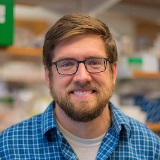 Jonathan Watts, PhD, Professor, RNA Therapeutics Institute, University of Massachusetts Chan Medical School
Jonathan Watts, PhD, Professor, RNA Therapeutics Institute, University of Massachusetts Chan Medical School
Chemical modification has been a key enabler of clinical success for all previous classes of oligonucleotide therapeutics. As genome editing increases its clinical reach, we describe progress in modification of guides for Cas9 nuclease, base editing and prime editing approaches, including split prime editing systems. We measure changes in both specificity and in vivo efficacy (LNP delivery co-formulated with mRNA).
11:15 amTransition to Lunch
11:25 amLuncheon Presentation (Sponsorship Opportunity Available) or Enjoy Lunch on Your Own
11:55 amSession Break
PLENARY SESSION
プレナリーセッション
Delivery with Bicycles and Camelids: Targeted Delivery of Oligonucleotide Drugs to Muscle and the Central Nervous System via the Transferrin Receptor
 Eric Swayze, PhD, Executive Vice President, Research, Ionis Pharmaceuticals
Eric Swayze, PhD, Executive Vice President, Research, Ionis Pharmaceuticals
Ligands for transferrin receptor can potentially provide solutions to the delivery of oligonucleotides to skeletal and cardiac muscle, as well as across the blood brain barrier. We have optimized oligonucleotide conjugates to TfR1 ligands including Bicycle peptides and camelid nanobodies to reduce the total dose of the administered drug. These constructs have achieved successful delivery to the target tissues, offering the potential for treatment of cardiovascular and neurological diseases.
CRISPR Genome Editing for Therapeutic Applications: Advances in in vivo Editing
 Rubina Parmar, PhD, Vice President, Chemistry & Delivery Sciences, Intellia Therapeutics
Rubina Parmar, PhD, Vice President, Chemistry & Delivery Sciences, Intellia Therapeutics
At Intellia, we are advancing a full-spectrum genome editing company. We are deploying the industry’s broadest and deepest toolbox, including novel editing and delivery solutions, to harness the immense power of CRISPR-based technologies for in vivo and ex vivo therapeutic applications. In this presentation, we will share the advances in the therapeutic applications of CRISPR/Cas9 for in vivo genome editing.
2:05 pmRefreshment Break in the Exhibit Hall with Last chance for Poster Viewing
IN-PERSON BREAKOUT DISCUSSIONS
対面式のブレイクアウトディスカッション
Breakout Discussions are informal, moderated discussions, allowing participants to exchange ideas and experiences and develop future collaborations around a focused topic. Each discussion will be led by a facilitator who keeps the discussion on track and the group engaged. To get the most out of this format, please come prepared to share examples from your work, be a part of a collective, problem-solving session, and participate in active idea sharing. Please visit the Breakout Discussion page on the conference website for a complete listing of topics and descriptions.
Trending: How Companies Get Acquired
Renee Williams, Founder and Managing Partner, Williams Biotech Consulting and Executive Director, Woodside Capital Partners; Former VP of External Strategy, Genetic Medicines, Eli Lilly
This discussion will look at the following trends as it relates to acquisitions of biotechs over the past years:
- Deal volume and size
- Preclinical vs clinical
- Stage of Financing
- Time to exit vs valuation
- Top strategic acquirers
DEVELOPING EDITING THERAPIES
編集治療の開発
Therapeutic Applications for Hepatic and Extrahepatic RNA Editing via Endogenous ADAR Enzymes
 Ian Harding, PhD, Senior Scientist I, Wave Life Sciences
Ian Harding, PhD, Senior Scientist I, Wave Life Sciences
AIMers are oligonucleotides that engage endogenous ADAR enzymes to induce highly efficient and specific A-to-I RNA base editing. Our recently optimized AIMer design increases the potency, target space, and tissue targeting capabilities of RNA editing. Optimized AIMers support efficient RNA editing in both hepatic and extrahepatic tissues, including the central nervous system, kidney, and lung. We will show that AIMers support RNA editing of disease-relevant targets in multiple tissues.
Developing Novel RNA-Editing Therapies to Address Unmet Needs for Rare and Highly Prevalent Diseases
 Venkat Krishnamurthy, PhD, Senior Vice President & Head of Platform, Korro Bio
Venkat Krishnamurthy, PhD, Senior Vice President & Head of Platform, Korro Bio
This talk will focus on creating transformative genetic medicines for diseases of the liver, CNS, and beyond. At Korro, we use the “OPERA” (Oligonucleotide Promoted Editing of RNA) platform as a differentiated approach to identifying highly potent RNA editing therapeutics. This talk will also discuss Korro’s lead program, KRRO-110, which is potentially a best-in-class therapeutic for the treatment of Alpha-1 Antitrypsin Deficiency (AATD).
Approaches to Optimize Safety and Potency of LNP-Based CRISPR-Based Medicines Delivered In Vivo
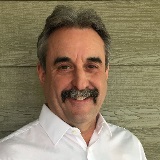 Steven Wolk, PhD, Vice President, Analytical Chemistry, Editas Medicine
Steven Wolk, PhD, Vice President, Analytical Chemistry, Editas Medicine
The goal for the next generation of CRISPR-based medicines is the development of potent and safe therapeutics that can be delivered in vivo specifically to the target cells of interest. The mRNA/LNP format is currently showing the most promise to achieve this challenging goal, and various factors can be optimized to enhance performance, including vehicle (lipid composition and targeting elements), cargo (mRNA and gRNA), and analytical method development.
NOVEL PHOSPHORAMIDITES
新規のホスホロアミダイト
Novel Phosphoramidites Enabling a Cationization of The Selective Segments of Oligonucleotides
 David Tabatadze, PhD, President, ZATA Pharmaceuticals, Inc.
David Tabatadze, PhD, President, ZATA Pharmaceuticals, Inc.
ZATA's amidites enable incorporation of ON backbone modifying (cationization) groups by direct automated synthesis. Such groups can be incorporated at any number and location enabled by size of ONs. Incorporated groups do not compromise any key properties, such as hybridization, solubility, stability, and others.
5:30 pmClose of Conference
*不測の事態により、事前の予告なしにプログラムが変更される場合があります。
スポンサー更新
アジェンダ・講演者・スポンサー更新
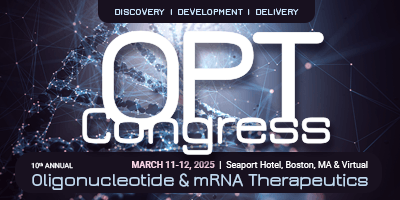

 Talk Title to be Announced
Talk Title to be Announced








